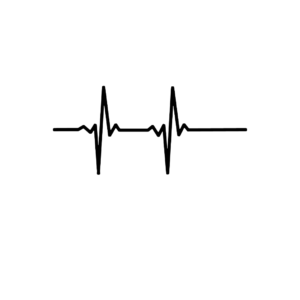Description
Overview of Bachelor of Science in X-Ray Technology
The Bachelor of Science in X-Ray Technology program is designed to equip students with the knowledge and skills required to become proficient X-Ray Technicians. This program focuses on the principles, procedures, and applications of radiographic imaging, preparing graduates to perform diagnostic imaging using X-ray technology. The curriculum combines theoretical coursework with hands-on clinical experience in various medical settings.
Core Areas of Study in B.Sc. X-Ray Technology
Introduction to Radiologic Sciences
Overview of the radiologic technology field, emphasizing the role of X-ray technology in the diagnosis and treatment of medical conditions.
Human Anatomy and Physiology
Detailed study of human anatomical systems, focusing on understanding the structures and functions relevant to radiographic imaging.
Radiation Physics and Safety
Understanding the physics behind X-ray generation, types of radiation, and safety measures to protect patients and staff from unnecessary exposure.
Radiographic Imaging Techniques
In-depth examination of various X-ray procedures, including positioning techniques, equipment handling, and image acquisition.
Patient Care and Communication
Development of skills for effectively communicating with patients, including explaining procedures and ensuring comfort and safety during imaging.
Radiologic Pathology
Study of common diseases and conditions that can be identified through X-ray imaging, helping to correlate clinical findings with radiographic appearances.
Quality Control and Quality Assurance
Importance of maintaining high imaging quality through proper equipment usage, calibration, and adherence to safety and regulatory standards.
Ethics and Professionalism in Radiography
Discussion of ethical issues in healthcare, including patient confidentiality, informed consent, and professional conduct for radiologic technologists.
Clinical Practice in Radiography
Practical clinical training focused on performing X-ray procedures and working closely with radiology teams in healthcare settings.
Research Methodology and Healthcare Statistics
Introduction to research principles relevant to healthcare, including data collection methods, statistical analysis, and quality improvement.
Curriculum Structure
A typical Bachelor of Science in X-Ray Technology program may include:
Core Courses: Key subjects covering anatomy, radiographic principles, patient care, and imaging techniques.
Laboratory and Clinical Experience: Opportunities for hands-on training in clinical settings, performing X-ray exams under supervision.
Elective Courses: Options to study specialized topics such as advanced imaging techniques or management in radiologic sciences.
Capstone Project or Internship: A research project or clinical practicum that allows students to apply their acquired skills in a practical environment.
Admission Requirements
Admission to a B.Sc. in X-Ray Technology program typically requires:
A high school diploma with a strong background in science courses, particularly biology, chemistry, and physics.
A specified minimum GPA (often around 2.5 or higher on a 4.0 scale) as determined by the institution.
Some programs may require standardized test scores (e.g., SAT or ACT).
Letters of recommendation and a personal statement outlining the candidate?s interest in radiologic technology.
Skills Developed in a B.Sc. in X-Ray Technology Program
Graduates of the Bachelor of Science in X-Ray Technology program will develop essential skills, including:
Technical Proficiency: Expertise in operating X-ray equipment, positioning patients, and obtaining diagnostic images.
Patient Care Skills: Ability to perform patient assessments, ensure comfort, and communicate effectively throughout the imaging process.
Critical Thinking: Strong analytical skills for interpreting images and understanding the clinical context of findings.
Attention to Detail: Precision in performing radiographic procedures, documenting patient information, and ensuring imaging quality.
Teamwork and Collaboration: Ability to work effectively within a multidisciplinary healthcare team to provide exceptional patient care.
Career Opportunities
Graduates with a Bachelor of Science in X-Ray Technology can pursue various career paths, including:
X-Ray Technologist
Performing diagnostic X-ray examinations, ensuring patient safety and comfort, and producing high-quality images for interpretation by radiologists.
Radiologic Technologist
Conducting a broader range of imaging procedures beyond just X-rays, including CT scans, mammograms, and fluoroscopy.
Radiation Safety Officer
Overseeing safety protocols related to radiation exposure and ensuring compliance with regulatory standards within imaging departments.
Radiology Supervisor or Manager
Managing radiology departments, supervising staff, and maintaining standards of practice and quality assurance.
Specialized Radiographer
Focusing on specialized areas within imaging, such as orthopedic radiography, pediatric radiography, or trauma imaging.
Conclusion
The Bachelor of Science in X-Ray Technology provides a strong foundation for individuals pursuing a career in the dynamic field of medical imaging. Through a comprehensive curriculum that emphasizes both theoretical knowledge and practical skills, graduates are well-equipped to perform essential diagnostic imaging procedures, contributing significantly to patient diagnosis and care. If you have further questions about the B.Sc. in X-Ray Technology program or related topics, feel free to ask!









